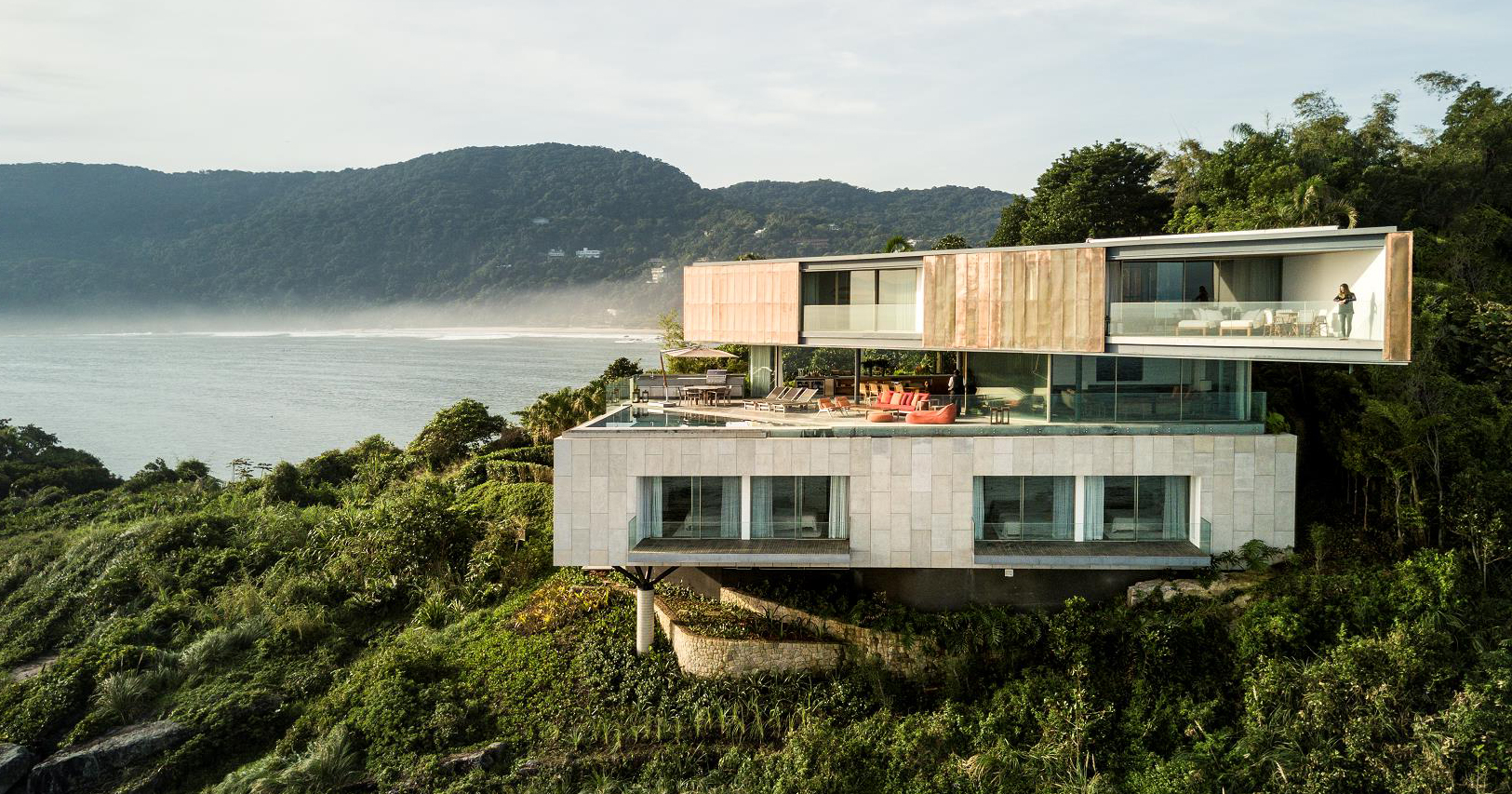Architects: Showcase your next project through Architizer and sign up for our inspirational newsletter
Steven Jacobs is an art historian specialized in the artistic visualizations of architecture, cities and landscape in film. His other research interests focus on the relations between film and the visual arts. His publications include the recently rereleased The Wrong House: The Architecture of Alfred Hitchcock (010 Publishers, Rotterdam, 2014) and Framing Pictures: Film and the Visual Arts (Edinburgh University Press, 2011). He currently teaches at the Department of Art History of the University of Ghent in Belgium. Here are Jacobs’ top reasons to study architecture through the lens of Hitchcock …
1. Hitchcock’s Background as a Production Designer in German Studios
Before he started directing films in 1925, Hitchcock designed sets for films shot in the sophisticated studios in Germany. He favored oppressive and claustrophobic spaces, which were important in expressionist cinema as well as in the Kammerspielfilm, which dealt with individuals in an everyday claustrophobic environment.
In addition, sophisticated special effects developed in German studios (such as the Schüfftan process, or the use of scale models) proved very important to Hitchcock, who continued using rear projections, for instance, when they were already considered outdated special effects.
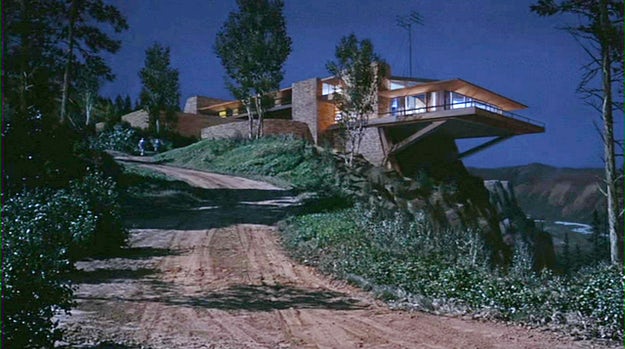
The house in North by Northwest was constructed for the film to resemble a Prairie-style Frank Lloyd Wright home.
Another link to the legacy of his work in Germany is his reliance on shooting in the studio. Although some of his films were original in their use of location shooting, Hitchcock favored the control on the set. Production notes often illustrated his almost maniacal obsession for control over the details in the production design.
2. A predilection for Architectural and Domestic Details
Jean-Luc Godard noted that of Hitchcock, we remember objects instead of stories: the glass of milk in Suspicion, the cigarette lighter in Strangers on a Train, the cup of coffee containing poison in Notorious, etc. Such fetish objects — emphasized through close-ups or by their integration in Hitchcock’s typical point-of-view editing technique — pervade the master’s films. In many cases, these objects have architectural or domestic connotations.
Keys, locks, closed doors and door handles relate to a secret that is hidden within the confines of the house and the family. Also, windows are important in Hitchcock films. Mediating between light and shadow, they are connected to the Hitchcockian theme of voyeurism. Rear Window deals with this in its entirety and has been interpreted as a meta-film.

Panorama of the view from James Stewart’s apartment in Rear Window. © Paramount Pictures
Undoubtedly, stairs are the quintessential Hitchcock motif. Already in 1929, a critic spoke of Hitchcock’s “staircase complex.” Spatially fragmented structures, staircases are places of crisis and their perspectival effects seem to confine characters.
Connecting the semi-public spaces of the house with the strict private environment of bedrooms, stairs are the spines of domestic spaces, and hence an arena for psychological tensions. Staircases also lead to trouble, since inquisitiveness drives characters upstairs or downstairs. In addition, Hitchcock integrates staircases into his technique of suspense: Each step advances but also delays the dénouement.
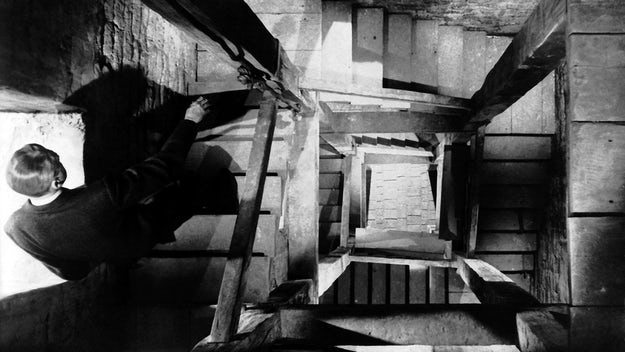
Still from Vertigo. © Paramount Pictures
3. The Omnipresence of Monuments
Throughout his career, Hitchcock used famous monuments in his films. Often, climactic scenes are situated in buildings that are entertaining in themselves, such as the British Museum, the Statue of Liberty or Mount Rushmore.
Hitchcock was fascinated by the scale of such buildings, confronting them with the human bodies of his characters. He made the most of the emblematical power of monuments, which are symbolic by definition. Because of the monument, the environment becomes the ground for a communication with the past — a theme perfectly elaborated in the San Francisco locations of Vertigo, a film about characters haunted by the past. Instead of familiar places, monuments become deceptive and dangerous.
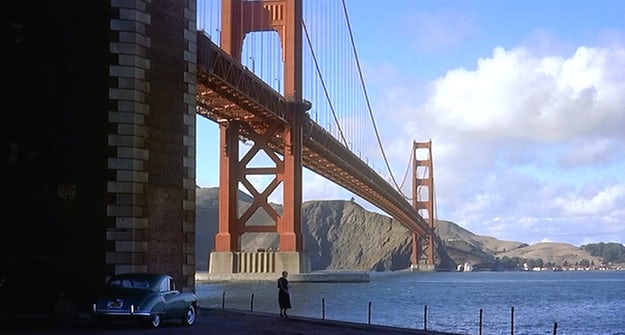
Still from Vertigo.
4. Single-set Films
In many Hitchcock films, large parts of the story take place within the confines of one or two buildings. Moreover, Hitchcock made several so-called “single-set films,” in which the entire story is situated in a single place. Rope, Dial M for Murder and Rear Window foreground their architectural contexts. Instead of merely advancing or punctuating the narrative, the single set becomes one with it. Consequently, the narrative depends greatly on the tension between inside and outside space, as well as between on-screen and off-screen space.
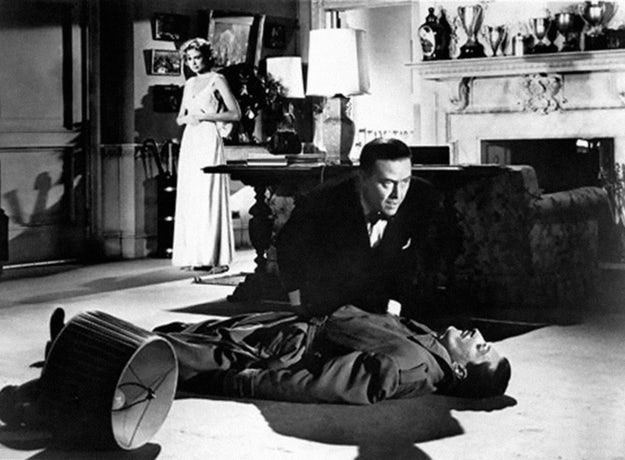
Publicity Image from Dial M For Murder © Warner Brothers
Hitchcock combined the single set with striking experiments in cinematic technique. In Rope, Hitchcock explored the single set representing a Manhattan penthouse by means of a (supposedly) single take, shot with an exceptionally mobile camera. In Dial M for Murder, Hitchcock used the 3-D process to create dramatic effects in a furnished interior.
In Rear Window, Hitchcock shifted to the widescreen VistaVision format and its demand for space-filling detail, which enabled him to work with a more lavish kind of art direction. In this film, Hitchcock combined the single set with a single viewpoint since the main character is confined to a wheelchair. In so doing, the courtyard is transformed into a claustrophobic and panoptic space — an architecture perfectly in line with Hitchcock’s voyeurism.
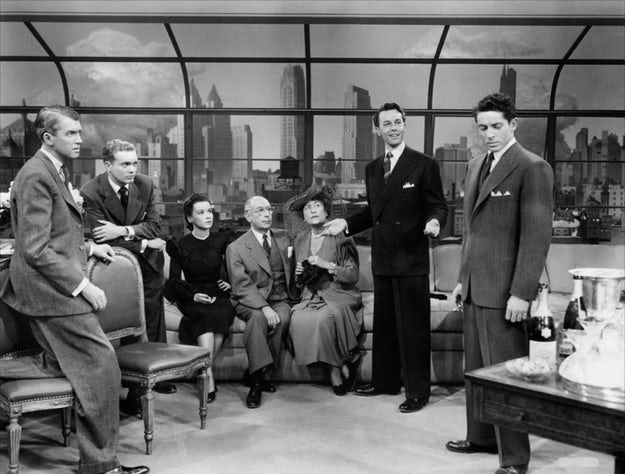
On the set of Rope. © Universal Studios
5. The Haunted House
Many Hitchcock films are stories about one or two houses, which become places of fear and disturbance. This theme refers to the Victorian novel and many Hitchcock films contain important scenes set in Victorian mansions. Places full of secrets, mysteries and dark corners, these buildings are like labyrinths in which characters feel lost. Victorian houses also have crammed interiors, which make clear that the characters are haunted by demons of past times.
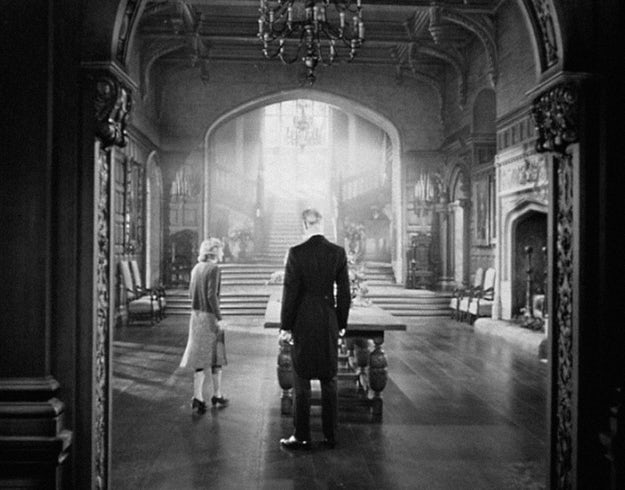
Film Frame from Rebecca. © ABC/Disney/Buena Vista
Hitchcock’s Victorian mansions are also the perfect locale for the so-called “Gothic plot.” In this narrative formula, a young woman feels attracted to a mysterious man. They get married and after the honeymoon, the woman finds herself in the ancestral home of her husband. Here, the heroine gets involved in a series of bizarre events in which the husband increasingly frightens her.
Eventually, the suspicion arises that the mysterious and tormented husband wants to kill his young bride. Rebecca and Suspicion are prime examples of this Gothic plot, but Hitchcock also contributed to this cycle with Shadow of a Doubt, Notorious, and Under Capricorn. In these 1940s films, as in later works such as Psycho and The Birds, danger lurks in the house. By turning the familiar domestic environment into a place of fear, Hitchcock developed into a master of the uncanny.
Liked this article? Check out A Brief History Of Modern Architecture Through Movies and The Architecture Of The Incredibles.
The Wrong House: The Architecture of Alfred Hitchcock is available on Amazon and via Artbook.
Architects: Showcase your next project through Architizer and sign up for our inspirational newsletter


